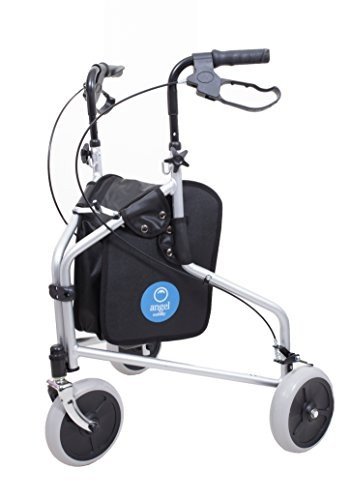Mobility Scooters: A Comprehensive Guide
Mobility scooters have become a necessary mode of transport for lots of people dealing with mobility difficulties. This post checks out the various elements of mobility scooters, including their types, advantages, features, and a guide for potential purchasers.
Comprehending Mobility Scooters
Mobility scooters are electrically powered devices developed for individuals with limited mobility. They provide a way of transportation for individuals who might have difficulty walking but still wish to retain their independence. They come in different designs and features to accommodate a broad range of requirements.
Types of Mobility Scooters
Mobility scooters can usually be categorized into three main types:
| Type | Description | Best For |
|---|---|---|
| Compact Scooters | These are small and lightweight, ideal for inside and short journeys. | Users with restricted storage area or those who take a trip frequently. |
| Mid-size Scooters | A balance between portability and stability, suitable for both indoor and outside usage. | Those who require to cover a variety of terrains. |
| Durable Scooters | Large and robust, designed for rugged outdoor use and heavier people. | Users requiring extra weight capacity or going off-road. |
Secret Features of Mobility Scooters
The option of mobility scooter frequently depends upon the functions that line up with private needs. Here are a few of the key features to think about:
- Weight Capacity: Mobility scooters feature various weight limits. It is essential to pick a scooter that can effectively support the user's weight.
- Variety: The range a scooter can take a trip on a single charge varies. Depending on user requirements, one might select scooters with a range of as much as 40 miles.
- Speed: Most mobility scooters can reach speeds in between 4 to 8 miles per hour. Consider what speed is comfortable and safe for the desired environment.
- Turning Radius: A compact turning radius is essential for indoor usage, permitting for easier navigation in tight areas.
- Battery Type: The type of batteries utilized can impact the scooter's performance. Lead-acid and lithium-ion batteries are the most typical.
Advantages of Using Mobility Scooters
The benefits of mobility scooters extend beyond just transportation. Some key advantages consist of:
- Independence: Users can navigate their environment without relying on caretakers, promoting self-reliance and confidence.
- Health Benefits: Using a scooter can encourage outdoor activity, causing physical and mental health improvements by minimizing feelings of seclusion.
- Convenience: Scooters can easily be operated in numerous environments, whether inside, in shopping malls, or outdoors.
Essential Considerations When Buying a Mobility Scooter
When acquiring a mobility scooter, a number of considerations can assist guarantee that you select the right design:
Assess Individual Needs:
- Mobility level: Consider just how much help the individual will require.
- Series of usage: Determine where the scooter will mainly be used (inside your home, outdoors, on rough terrains, and so on).
Test Drive:
- Always test drive a number of designs to find a suitable fit. Take note of comfort, ease of steering, and the scooter's responsiveness.
Evaluation Safety Features:
- Look for scooters with appropriate security features like lights, indications, and anti-tip designs.
Check Warranty and Service Options:
- A dependable guarantee and available service options are important for long-lasting use.
FAQs about Mobility Scooters
1. How quick do mobility scooters go?Mobility scooters usually have speeds ranging from 4 to 8 miles per hour, with most designed for security instead of high-speed travel. 2. Are there weight restrictions on mobility scooters?Yes, mobility
scooters include specific weight limitations, frequently varying from
250 lbs to over 500 pounds, depending upon the model. 3. mobility scooter suppliers be utilized indoors?Certain models, particularly compact scooters, are particularly designed for
indoor use and are much easier to maneuver in tight areas. 4. How typically do the batteries require to be replaced?Battery life can differ based upon use, however generally, with correct care, batteries may last in between 1 to 3 years before requiring replacement
. 5. Are mobility scooters covered by insurance?Coverage can differ, however some insurance coverage strategies, including Medicare and Medicaid, might cover part of the expense. It's advised to talk to individual insurance coverage suppliers. Mobility scooters serve as a
important tool for many people, allowing them to maintain
their flexibility and independence. By comprehending the various types and features of mobility scooters, individuals can make educated decisions customized to their specific requirements.
Whether utilized for errands, mingling, or leisurely activities, mobility scooters can enhance the quality of life for those with mobility limitations. Buying a mobility scooter is a choice that can substantially affect a person's every day life. For that reason, individuals need to thoroughly examine their alternatives and choose a design that best lines up with their way of life and mobility requirements
.

